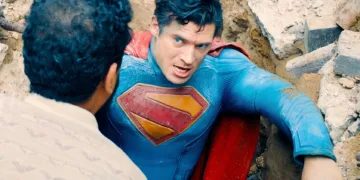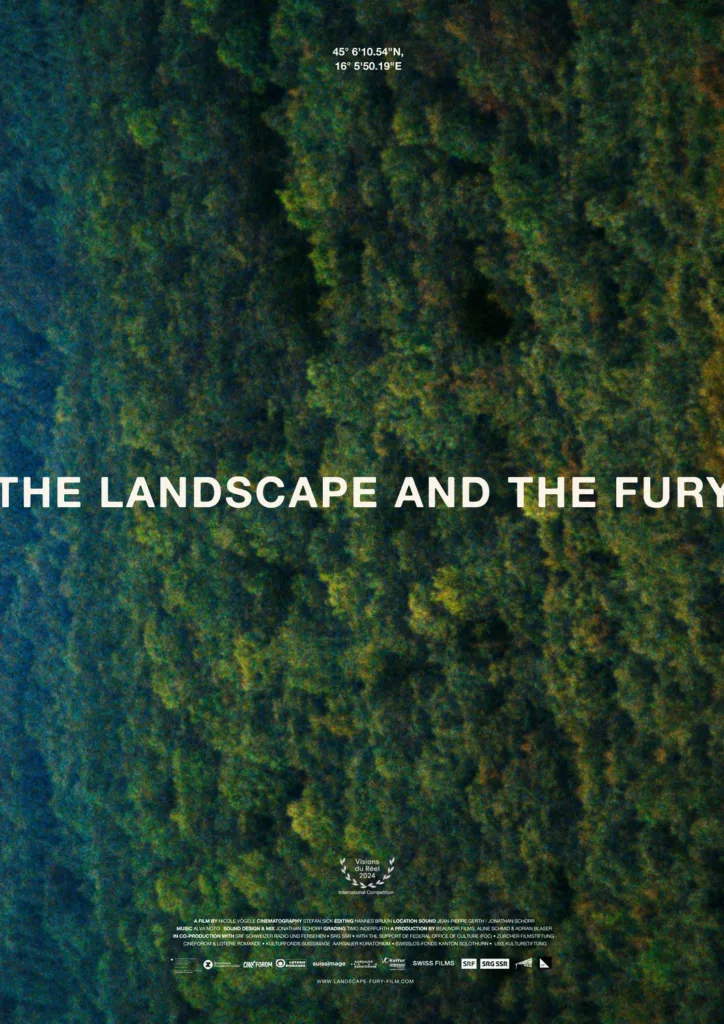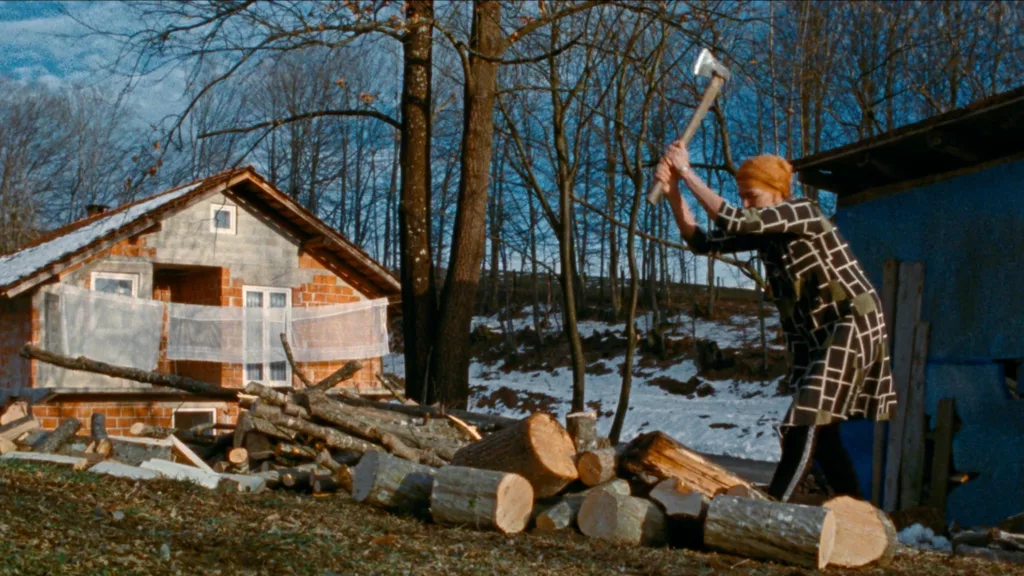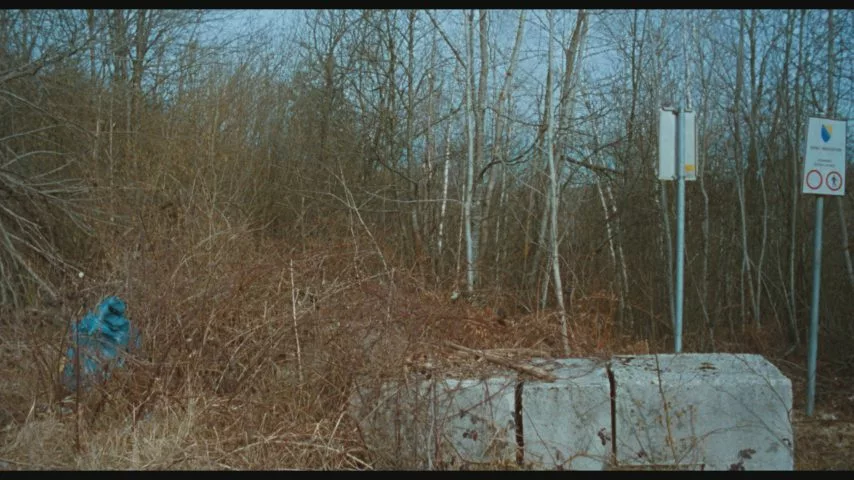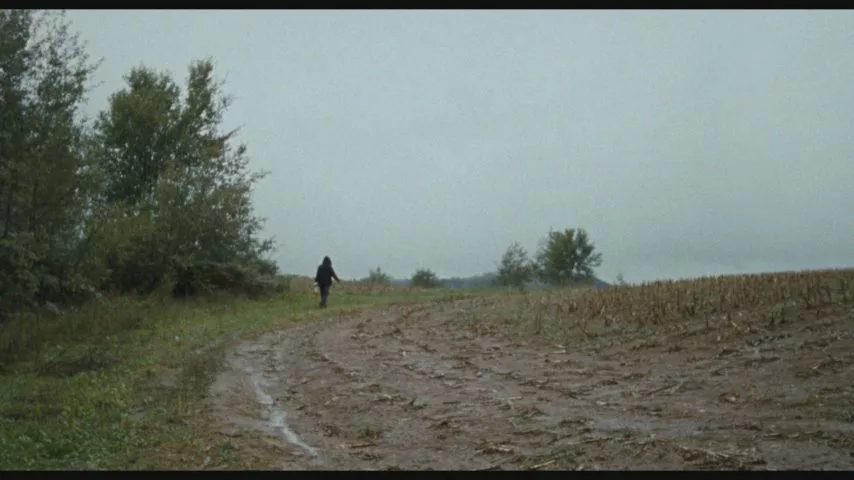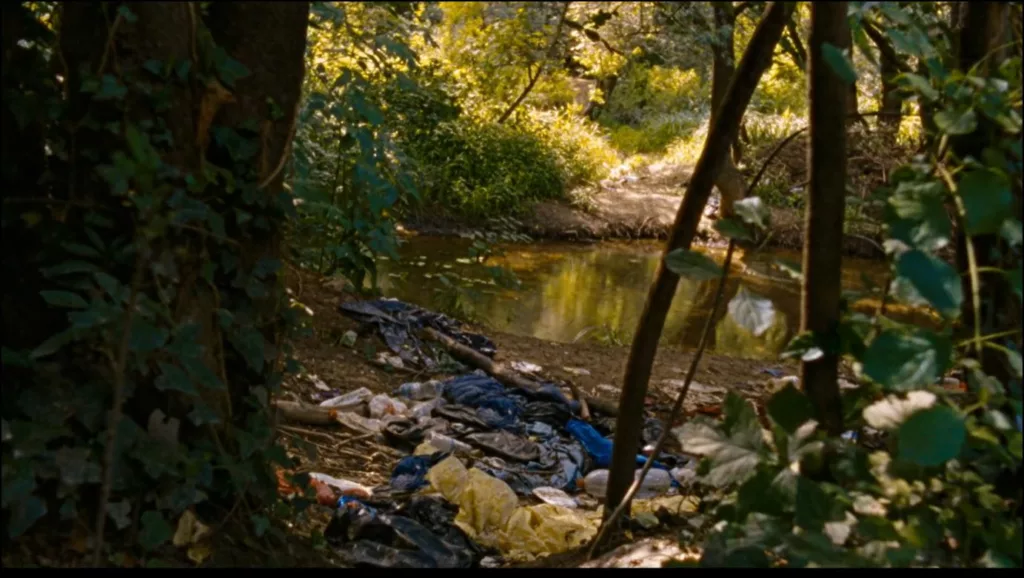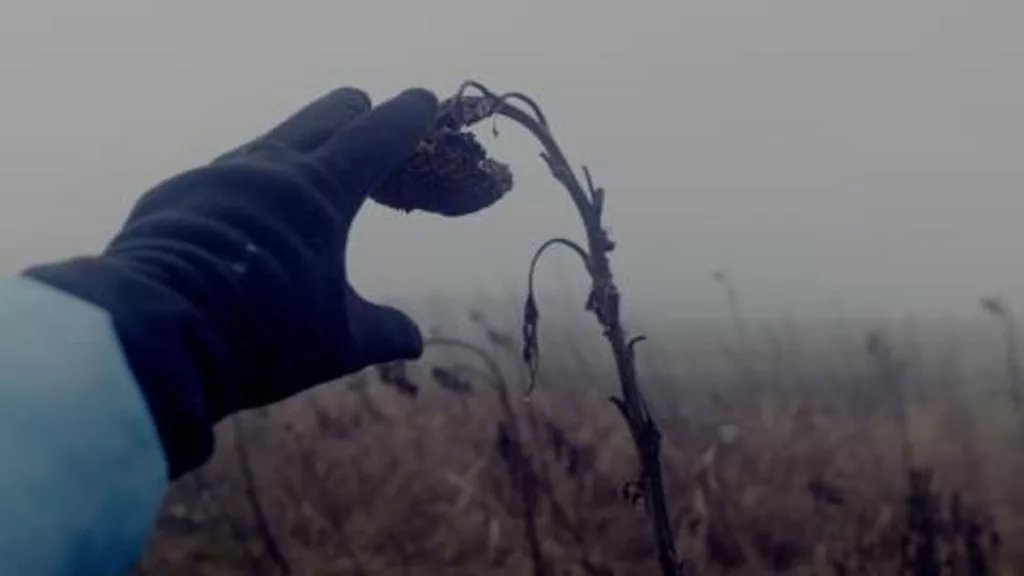Nicole Vögele’s haunting documentary The Landscape and the Fury brings viewers deep into the border region between Croatia and Bosnia-Herzegovina. Released in 2024, the film immerses us in vast forest landscapes and small villages situated along the 932-kilometer border. Here, director Vögele spent years observing the intersection of the past and present.
The director’s background in investigative journalism is evident, as she maintains a thoughtful distance while delving intimately into people’s lives. Through changing seasons, we see forests that still conceal remnants of the 1990s war, from rusting tanks to landmines that maim to this day. Veteran interviews offer sobering glimpses into the conflict’s horrors. Yet life persists—local families work and children play, and communities retain compassion despite challenges, occasionally aiding migrants who pass through with nowhere else to go.
These migrants flee poverty and danger, undertaking harrowing Balkan border crossings in hopes of finding sanctuary in the European Union. But pushbacks by Croatian police cruelly rob them of this chance, often inflicting abuse. It’s a disturbing reality the film captures through audio of screams in the night and glimpses of objects left behind as people are forced back into the shadows of the forest.
Across 138 mesmerizing minutes, Vögele forges a rich sensory experience through imagistic sequences that unfold at an intentional, unhurried pace. Steam rises from a lone figure trekking through mist; trees gently sway while deeper meanings linger in the gaps between. With this borderland as a backdrop, the film breathes life into landscapes scarred by conflict and navigates the ties between humanity and place, past and present, those who have homes and those forever searching.
Atmospheric landscapes
Nicole Vögele crafts her film to put the natural surroundings at the forefront. Wide landscape shots that linger enable forests, fields, and streams to become as much a protagonist as any human character. By prioritizing changing seasons through changes in light and vegetation growth, Vögele positions her story within the continuity of the environment.
This approach requires viewing stamina. There is no rapid cutting or quick dialogue to smoothly guide our gaze. Scenes unfold at their own pace, allowing impressions to emerge from textures of sight and sound rather than narrative exposition. Viewers must adjust to this rhythm, settling into sequences that can last minutes on end.
Yet it’s rewarding to adopt the director’s tempo. As moments pass silently, sensations deepen. Rustling trees and running water fill spaces between dialogue snippets, weaving a hypnotic audio tapestry with Alva Noto’s score. Stefan Sick’s cinematography brings both vastness and intricacy to rural settings, catching beauty in bent reeds or swirling sky shadows.
Together, visual and aural elements forge an all-enveloping atmosphere. Darkness falls like a shroud, only punctured by the red glow of taillights slipping through forest trails. Daylight dances on rippling surfaces yet hints at past tragedies through jagged ruins half-sunk in mud. Subtle disturbances in the night air carry weightier implications.
By prioritizing landscape over narrative, Vögele places us inside her border region sensually rather than as detached observers. We feel surrounded by the same landscapes navigated by migrants, marked by war yet resilient in their seasonal transformations. Nature’s rhythms come to structure our own experience of places and people in this intricate, quietly haunting film.
Threads of Memory
Nicole Vögele’s film intimately weaves together threads from both the past and present. Scenes shift seamlessly between Bosnia’s war history and the ongoing migrant situation along its external EU border.
Subtle reminders of the 1990s conflict linger in the landscape. Deminers still riskily pick through forests, vigilantly searching for unexploded mines leftover from the chaos. Their precarious work helps clear a literal path, though spiritual scars also remain unhealed. Two elderly veterans open up about terrible losses endured and lives forever marred by tragedy.
Yet nature itself seems to heal with time. Trees reclaim ruined structures, slowly obscuring what once was. Rebirth appears where only devastation stood before. Still, all realize the past can never be forgotten, nor should it be. Its lessons echo into the future.
The film captures border villages where everyday life continues for locals. Mothers’ laughter rings out as children play. Men work in fields that have nurtured generations. Despite hardship, these steadfast communities persevere.
Yet others currently flow through like fluid border crossings. Exhausted migrants pause to rest, regaining strength before the next leg of uncertain journeys. Hospitality remains for those passing through, though growing numbers strain resources. Shared humanity outweighs all other factors in these fleeting moments of refuge.
Vögele finds parallels in these chance encounters between those putting down roots and others uprooted. Flight from war, poverty, or instability unites strangers across vast distances. Her vision underscores our shared vulnerability and capacity for empathy—if only we opened our eyes to understand those different from ourselves. Through her subtle, profound storytelling, borders dissolve, and we see our shared stake in humanity.
Revelations from a Remove
Nicole Vögele makes ingenious use of both distance and intimacy in The Landscape and the Fury. While her camera often remains removed, hovering at the edge of scenes, precise sound design draws us penetratingly near invisible events.
We observe a subtle dance, ebbing and flowing between removal and involvement. Impassive forests serve as vivid backdrops, weather persisting regardless of human dramas unfolding unseen beyond tall trees. Yet muffled voices carry clearly on the wind, migrants’ conversations permeating our perception despite a visual lack of context.
This duality of perspective fosters thought beyond spectacle. Shots linger where needed, eschewing artifice yet immersing us fully in nature’s rhythms. Space for contemplation lets reflections germinate where a tighter frame may have sown only instinct. The divide between onlookers and subjects seemingly widens, yet empathy bridges this gap when we hear struggles in someone’s tone, though faces remain obscure.
Vögele invokes our shared stake in humanity through what’s unsaid or implied through craft alone. Local generosity amid hardship feels all the more poignant, seen from an almost dispassionate distance. The repose of her approach grants dignity to private pain, rarely exploiting personal stories for their drama yet impacting deeply as a result.
By prioritizing impression over simplistic causality, this striking film nourishes viewers long after the final credits roll. Its distanced gaze cultivates compassion by encouraging us to look within, beyond fleeting images, and find in others echoes of our own vulnerabilities, capacity for endurance, and humanism against all odds. Some truths only distance can reveal.
Shared Struggles, Shared Humanity
On the border of Bosnia and Croatia, an unlikely bond forms between those with a place and those without. In The Landscape and Fury, flashes of empathy shine through despite a backdrop of turmoil.
We see it when a local woman speaks of helping migrants, drawn by echoes of her own refugee past. “They remind me of us,” she says. Her village survived the war; now others seek shelter within sight of its homes. Though numbers overwhelm, faces remain—of children waking hungry, mothers trudging weary miles.
Moments stay with us: two girls finding play in a plastic pool, smiles belying all they’ve seen. A family is chatting happily on a borrowed phone, a lifeline to their new home overseas. Small kindnesses sustain spirits in humanity’s darker stretches.
Yet shadows hang thick, too. We hear of police exploiting migrants, pockets drained by those meant to guard. And the wounds of a war remain fresh, its detritus still claiming lives—the mines that deminers map each daylight inch for. Pain persists where conflict has bled the earth.
Through sight and sound, the film conveys trauma’s ubiquity, shared across generations. It invites understanding of strangers’ plight from details that could be our own. But storytelling spans seasons—a reminder that spring will come, as nature cares not for mankind’s wars or walls. In nature’s rhythms, in shared struggles surmounted, our shared humanity endured.
The Landscape and the Fury moves us not with answers but with questions: can empathy outlive cruelty, and can communities exclude those in need? Its frames invite reflection on the ties between “us” and “them,” on duties when life has dealt each differently. Some truths only distance and time can reveal.
Reflections on Borders in the Landscape and the Fury
This film packs some powerful observations into its flowing runtime. Through meticulous visuals and sounds that match nature’s rhythms, it considers the impact we inflict upon landscapes and each other.
Vögele’s camera moves like a mind, taking everything in yet making meaningful connections. We witness activity both mundane and profound, from demining work to chance encounters between locals and travelers alike. And Alva Noto’s score sets a subdued tone to match the realities facing migrants in their journeys.
What emerges is a work reflecting on borders in multiple dimensions. Physical boundaries divide lands, yet history’s ghosts linger everywhere the eye travels. And divisions between “us” and “them” blur amid shared struggles in a place bearing scars of both past and present.
More than assigning answers, though, this film poses thoughtful questions for its viewers to ponder long after. By lingering on details that might otherwise pass unseen, it encourages cultivating empathy across perceived differences. And in portraying landscapes that endure despite humankind’s cruelties, it conveys timeless ties between all the inhabitants of this earth we share.
Even as it demands patience, The Landscape and the Fury rewards through impressionistic storytelling that does justice to its subjects’ complex truths. It leaves us seeing both fences and common ground in new lights and reflecting more deeply on the realities surrounding us all.
Borderlands Impressions
The Landscape and the Fury has received high praise from critics and festivals for its subtle impressions of a border region. At Switzerland’s Visions du Réel, it won the esteemed International Feature Film Competition prize. Other reviews call it “majestic” with a “clearly identifiable” style of close observation.
By prioritizing visual and audio details over rushed dialogue, Nicole Vögele crafts a patient narrative. Viewers join her roving camera amid forests and fields, glimpsing both migrants’ plights and the daily routines of locals entwined with history’s echoes. Alva Noto’s score mingles with sounds carrying weighty silences in between.
While its slow unfolding demands commitment, reviewers note becoming enveloped in the film’s rhythms, matching seasons and surroundings. It conveys emotions and realities, often passing unseen. One wrote that it “left the sensation of having experienced something grandiose and at the same time frighteningly simple.”
Quotes and remnants in the landscape speak volumes, as do chance encounters and scenes of solidarity between uncertain travelers and villagers recalling their own displacements. The director holds space for reflection on borders in their physical, temporal, and social dimensions, on fences, and on our shared grounds.
Through minute sensory details, The Landscape and the Fury immerses audiences in profound borderlands impressions beyond what headlines convey. It rewards those granting it patience with memorable meditations on the realities surrounding us all.
The Review
The Landscape and the Fury
Through poignant visuals and sound, The Landscape and the Fury immerses viewers in complex realities on the borderlands. With distance and patience, it conveys profound emotions and thoughtful observations of histories entwining diverse inhabitants. Rather than passing judgment, the film opens reflective space. In lush sensory details and moments of rare solidarity alike, it cultivates empathy across perceived differences.
PROS
- It gives viewers space and time to immerse themselves in emotions and reflections
- Conveys complex realities in an authentic yet approachable manner
- Offers thoughtful observations on shared humanity across divides through subtle details
- Crafts a vivid sense of place through sensory experiences aligned with nature's rhythms
CONS
- May frustrate some viewers seeking a faster narrative pace
- Minimal dialogue could leave some wanting more direct explanations


















